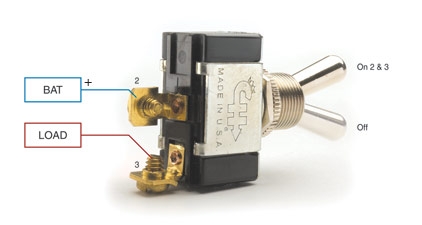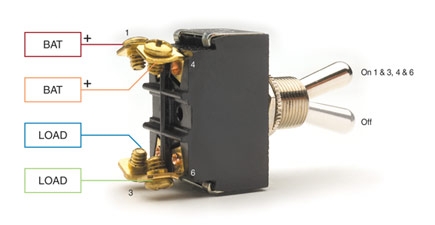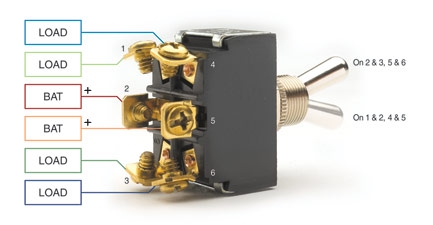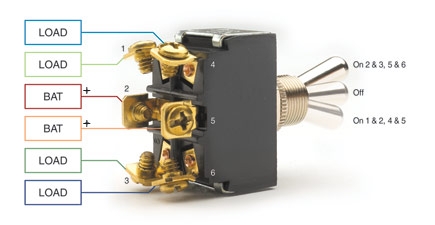
What do SPST, SPDT, DPST, and DPDT mean?
SP and DP refer to single pole and double pole, ST and DT refer to single throw and double throw.
Pole refers to the number of circuits controlled by the switch: SP switches control only one electrical circuit. DP switches control two independent circuits (and act like two identical switches that are mechanically linked). Do not confuse ‘pole’ with ‘terminal’. The DPST switch, for example, has four terminals, but it is a DP, not a 4P switch.
Throw refers to the extreme position of the actuator: ST switches close a circuit at only one position. The other position of the handle is Off. DT switches close a circuit in the Up position, as well as the Down position (On-On). A DT switch can also have a center position (frequently On-Off-On).
Single pole/throw and double pole/throw switches are by far the most common switches, but triple and quadruple configurations are also available. They are commonly denoted 3PST, 3PDT, 4PDT, etc.
Click Here For Our Automotive Switches
Download the Poles and Throws Datasheet
The following switch diagrams illustrate the most common types of toggle and rocker switches. (Click thumbnails to view full-size image)
SPST On-Off
 |
SPDT On-On
Only one of the loads can be energized at a time.  |
SPDT On-Off-On
Only one of the loads can be energized at a time.  |
DPST On-Off
Both load terminals can be energized at the same time. They are independent of each other and could be of different voltages.
 |
DPDT On-On
Functions like two spearate SPDT switches operated by the same actuator. Only two loads can be On at a time.
 |
DPDT On-Off-On
Functions like two separate SPDT switches operated by the same actuator. Only two loads can be On at a time.
 |